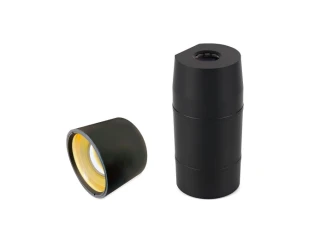AR/VR Imaging & Vision Technologies
Frequently Asked Questions
What is AR technology?
AR, or augmented reality, is a technology that superimposes computer-generated images or information onto a user's view of the real world.
What is VR technology?
VR, or virtual reality, is a technology that creates a simulated environment using computer-generated images and sounds, which users can interact with through a headset or other devices.
What are some common applications of AR technology?
AR technology is commonly used in gaming, education, marketing, and navigation.
What are some common applications of VR technology?
VR technology is commonly used in gaming, education, training, and simulations.
What types of AR/VR products are available on FindLight's AR/VR category?
FindLight's AR/VR category offers a wide range of products, including AR/VR headsets, cameras, software solutions, and other imaging and vision technologies designed for enhanced visual experiences.
What are some challenges of using AR/VR technology?
Some challenges of using AR/VR technology include high costs of development and implementation, potential motion sickness and other side effects, and the need for specialized hardware and software.
What industries are adopting AR/VR technology?
AR/VR technology is being adopted across a variety of industries, including gaming, education, healthcare, manufacturing, and retail.
What are the latest trends on AR/VR technology?
The latest trends in AR/VR technology include spatial computing, hand and finger tracking, social VR, extended reality (XR), and the integration of 5G networks. Spatial computing merges physical and virtual worlds, allowing users to interact with digital content in a physical space. Hand and finger tracking technology is being developed to allow for more intuitive and natural interaction with virtual objects. Social VR enables multiple users to interact and collaborate in real-time. XR integrates AR, VR, and mixed reality technologies to create more immersive experiences. 5G networks are expected to improve the speed and quality of AR/VR experiences, allowing for more seamless and responsive interactions.
What does future entail for AR/VR technologies?
The future of AR/VR technologies is promising, with advancements expected in several areas. In terms of hardware, it is likely that AR/VR devices will become more lightweight, comfortable, and affordable, making them more accessible to a wider range of users. In addition, advancements in optics and display technologies are expected to improve the quality of AR/VR experiences.
FindLight's AR/VR category offers a wide range of imaging and vision technologies for enhancing visual experiences. Browse industry-leading products from top manufacturers, including AR/VR headsets, cameras, and software solutions. Stay ahead of the curve with the latest advancements in AR/VR technology and find the perfect solution for your application.
